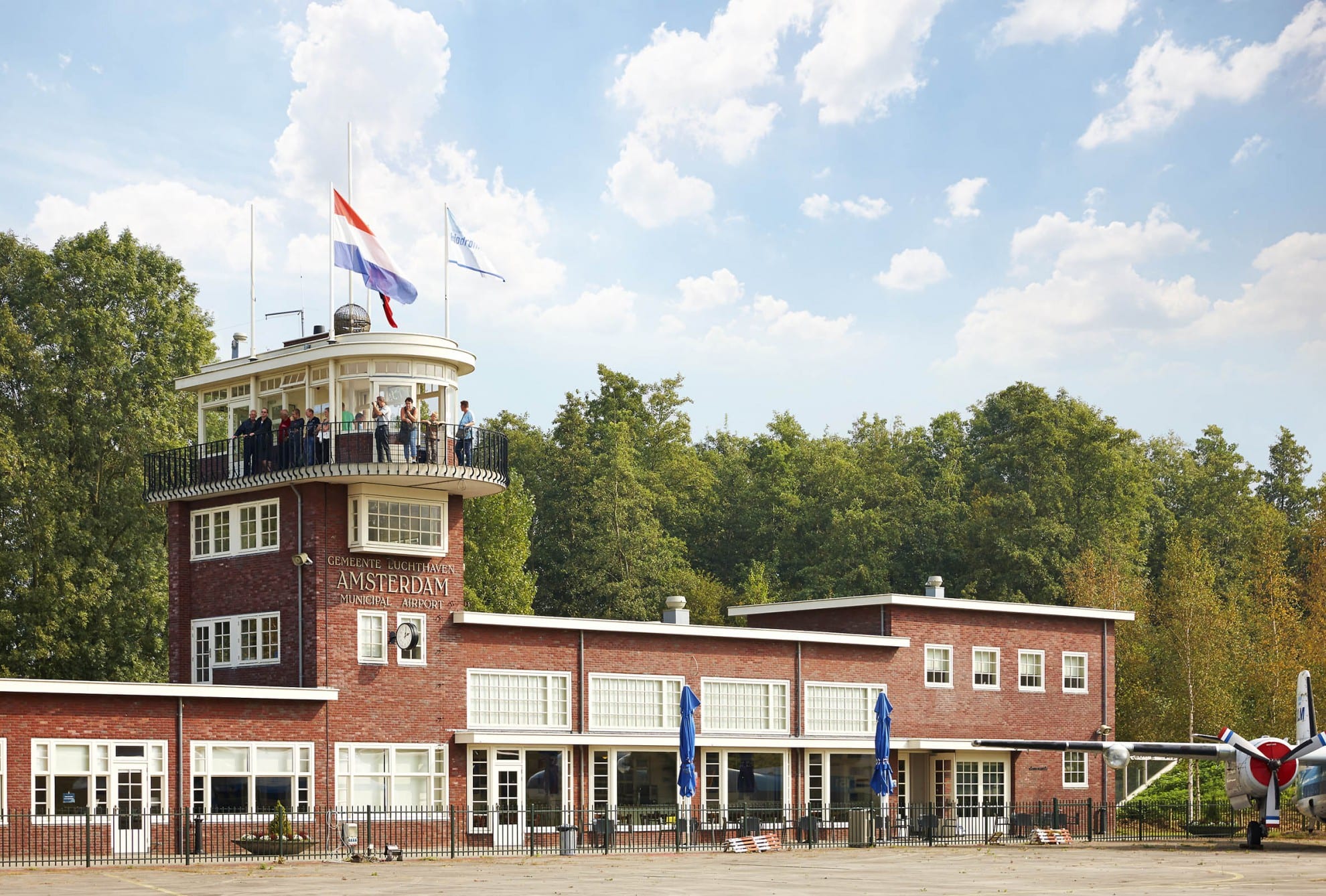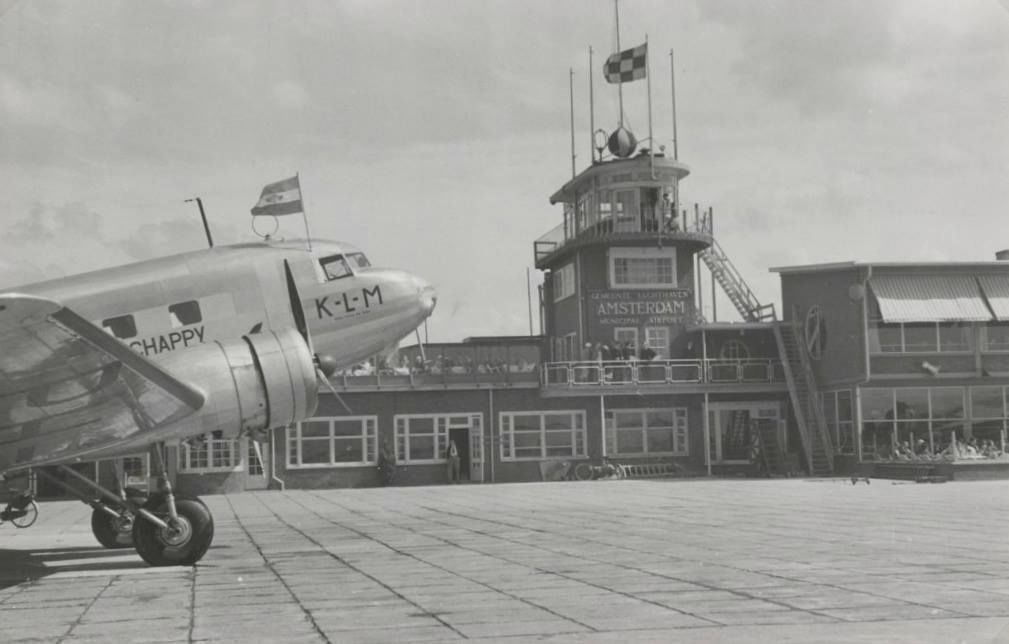In a way this is a follow-up of the last build, because it has the same subject in a diorama setting:
The Handley-Page HP. 42 PH-PNG “Groningen”
at Schiphol Airport, 1935.It's not often that I revisit a story or a build but this one wasn’t finished yet, I guess.
After building the Handley-Page HP.42 in 1/100 and having recoloured it into a fictitious livery, I thought it would be nice to also do the other fictitious livery from the story, the KLM one. But not in the same scale.
It was long ago that I have tried a small scale build. Mainly because of my eyes have deteriorated a little and me being a little afraid to face a failed attempt to build in these little scales (which I always have preferred).
 |
| A little giveaway here, you can see some result in the top of the picture. More on that can be seen below. |
Well, anyway, I just printed the HP.42 in 1/300. in its KLM livery, with the same registration as the Kroonduif one except for the nationality letters. So PH for the Netherlands instead of JZ for Dutch New Guinea. So this is the “Groningen”.
(something unusual for the time in KLM-tradition, since all their planes were named after birds, using the last letter of their registration code. Even the hard to name PH - AKQ was named after a bird. Kwak, a small heron. (It could have been Quetzal, but perhaps that was to long or still too unknown in the Netherlands at the time…)
The HP.42 build goes quite well, and I am pleased with it. I used a loupe once in a while to cut out things like the engine nacelles. But in the end it also could be done with just the old specs on the nose. It looks like it is going to work in this scale. work in progress pics further down the post.
But there is already something I can show in a more or less finished state. I wanted to create this into a diorama so I also wanted to make the Schiphol airport main building. There is a very nice little paper model of the building, originally called “Het Stationsgebouw”. It has been designed by Noorderlicht, the architect bureau that actually rebuilt the original Schiphol building at the Aviodrome in Lelystad, the National Dutch Air and Space Museum.
 |
| The rebuilt Schiphol main building like it looks today in Lelystad. Photo © Aviodrome Lelystad |
It was quite hard to even find good photos of the building itself (it has been destroyed by bombardments in the Second World War) but it was even harder to date the photos. I got confused when I saw elements on photos I couldn’t find back in the building I was making.
It appeared that at a certain moment it was thoroughly expanded and changed.
The restaurant part was rebuilt, moved forward and heightened. The tower got an extension with an external staircase and the lower roof was turned into a terrace. It took quite some time to figure out what happened to the building, and especially when it happened. Luckily, I finally discovered the elaborate rebuild took place in 1937 so I still could use the original 1928 model for my story.
The building has a couple of tricky sections that cross each other at some points. Also, some curved bits and recessed areas. Very interesting to build this one, since the building is in the famous “Amsterdamse School” style, a much praised architectural style from the 1920s and is kind of in between art deco and expressionism. It also has elements that are kind of modernist in style. Nice concrete elements that both are functional and decorative without being ornamental.
The subtle curves in walls and the straight concrete lean-to’s create an artistry in the building that is rarely seen in modern buildings. The bricks were laid with recessed layers of mortar, so there was structure and depth in the walls. Where I live, you still can find a lot of buildings in this style and they all are highly appreciated.
The Schiphol model was measured to be in about 1/300 and so I also printed the HP42 in that scale.
But on lots of photos I collected, there were many more planes in front of the building and so I wanted to add some to the scene. Bruno Vanhecke (Scissorsandplanes) made a very lovely DC-3 model which I recoloured into a Dutch Dakota from the thirties. The PH-ALI called Ibis was the first DC-3 that was put into service with KLM so that also put a date on my diorama, namely 1935.
Then I wanted to also have an older plane present. One that was more or less legendary in the Netherlands and had earned its merits but now was bound for retirement because of its showing age. I chose a model of the Fokker F.XVIII (18) PH-AIP, called Pelikaan.
This one is a free model online and actually wrongly edited. Part of the upper and lower wing sections are missing from the sheet. I reduced its size to approximately 1/72 on an A4 and repaired the wing parts. I recoloured it in the yellow wing colours the KLM used to have and then reduced it to 24% in Photoshop to get it to 1/300 scale. It now is very very tiny. I still have to see whether this one is possible in that size. The Dakota certainly is. For fun, I also recoloured a Dakota in the orange “neutral” livery the KLM wore in the months just before the outbreak of WWII. I used the ALK “Kemphaan”. But it won’t be in this diorama.
Now time for some pictures of the build of the planes. I am doing the HP.42 and the DC-3 simultaneously, so here is what I have been up to:
First cuts: And well, it was easier than I thought it would be. Using my tools like knitting needles and tweezers this still was very doable. And I already knew Gary Pilsworth's models were easily downscalable, because I made his 1/72 Super Guppy a few years back in 1/400. I used 120 gram paper for this job. Just a little sturdier than 100, not too thick. I found 160 was just a tad too thick.
The fuselage getting readied for nose parts and wing attachments.
Wings added. These were coming together really easy.
Loupe work. It was a test to see whether it was nice to work with but I also managed to get reasonable cut parts without the magnifying glass, and the freedom of movement was bigger without the loupe anyway. So this was a one-off. For now.
Engine nacelle.
The first part of the DC-3. The name 'Dakota" was not yet used for the plane, that came not until during the war. This DC-3 had PH-ALI as registration sign, so the bird name started with "i". Ibis.
This was the first DC-3 the KLM got delivered. They also had a set of DC-2's flying.
The older, smaller and slower Fokker F.XVIII planes they used for the transcontinental flights were degraded to regional flights.
In my what-if story, the DC-2 and DC-3 planes were operated next to the HP.42 'luxury liners'. The Handley-Pages were a little like an Orient Express in the air. Luxurious and for thr rich people that didn't mind their plane took just a little longer to arrive in Batavia.
Bruno's DC-3 has a remarkable good fit in this scale. It was designed to be in 1/300 but still the shape of the cockpit section is very well designed.
Also remarkable, the difference in size of the DC-3 and the HP.42. They really were that big!
Engine nacelles in the top wing.
And there you have it. This is about where I am now. More to come in the next week, there are a couple of busy days ahead, We're starting with shooting for a new documentary and my birthday is also coming up this weekend.
So, hopefully I have some spare hours to mess around with the models a bit more but I cannot guarantee it.
Anyway, thansk for stopping by and taking a look.
--PK





























No comments:
Post a Comment
attention spammers: all posts are moderated before placing.
you won't get through. you lose.